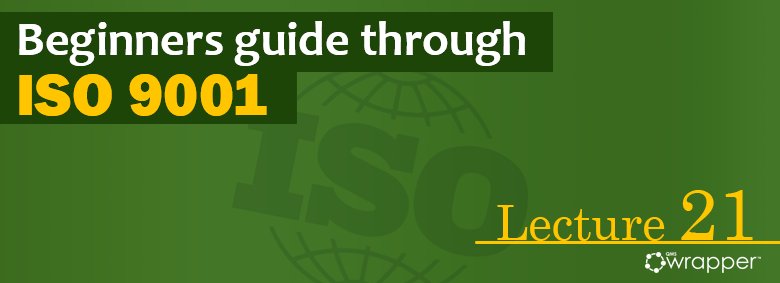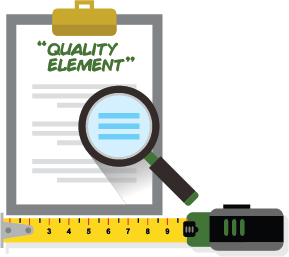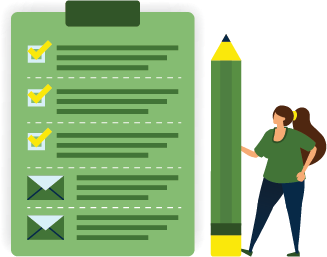
Monitoring measurement, analysis, and evaluation – Lecture 21
Lecture summary:
- Measurement, monitoring, analysis, and evaluation are critical for the assessment of the performance of your QMS
- The activities of monitoring and measuring generate data that must be analyzed and evaluated
- It is important to document and retain as evidence the results of the evaluation of the performance of your QMS
ISO 9001 Standard considers this activity as one of the tools that promote the improvement of the QMS. It aims to reflect the quantitative and qualitative performance of your QMS. In this clause, it’s expected from you to plan and decide on how you will monitor, measure, analyze, and then evaluate the process or its outputs. Make sure you follow up on certain principles that you have set.
First, you have to determine which quality elements will be monitored and measured and with what method. When you determine the method, you will use, you need to define which activities are needed to ensure valid results of monitoring and measurement.
Results you get should enable you to evaluate the performance and the effectiveness of your QMS. And of course, you have to document every step of the process and to keep it and maintain it.
The goal of monitoring, measurement, analysis, and evaluation is to provide you an understanding through a situation report concerning the performance of processes. When you get the data that the monitoring, measurement, analysis, and evaluation provide to you, they are supposed to relate directly to the controls suggested by the ISO 9001 standard.
These activities will show you the effectiveness of your QMS and the extent to which the QMS achieves its quality goals.
Advantages
Advantages of implementing monitoring, measurement, analysis, and evaluation are things like:
- Allowing users of the QMS to make decisions regarding the results of processes
- Allowing the users of the QMS to prevent nonconformities by identifying gaps in a process and preventing the transition of nonconform outputs to the next process
- Determining the effectiveness and efficiency of processes
Each monitoring and measuring activity you must conduct according to the method you have previously defined. The goal is that you identify, for each process, the parameters of outputs that affect its quality and determine the activities necessary to ensure valid results, activities that will ensure that the monitoring and measurement deliver results that can be analyzed and evaluated.
You have to measure each activity from the moment the input flows into a process and starts the activity until you accept the output you want. The measurements, collecting the data regarding a process or a process output, you must conduct in a defined stage, period, points, and events in a process, under defined conditions, and according to a sample rate that will support decisions.
Customer Satisfaction
One of the declared goals of the ISO 9001 Standard is to allow your company to enhance customer satisfaction. The strategy for this is to create a systematic method that tests customers’ perception of the level of their needs and has it achieved their expectations.

After understanding what the relevant expectations of the customer are, you must measure them using the method for monitoring customer satisfaction.
There are many methods for monitoring and evaluating customer satisfaction: customer surveys, customer feedback on delivered products and services, interviews with customers, market share analysis, compliments, warranty claims, and dealer reports.
Analysis and Evaluation
This part of the ISO 9001 standard lays out the requirements for the analysis and evaluation of the performance of your QMS.
The aim of analysis and evaluation is that you interpret and understand the current situations of quality elements, resources, processes, products, and services, through different quality aspects using different methods. The goal is that you decide whether those elements reach your desired objectives. The aspects of the QMS that are to be analyzed and evaluated that are specifically defined by the ISO 9001 Standard.
Last but not least is the requirement to provide data and information that will suggest the need for improvements to your QMS.
PREVIOUS LESSON NEXT LESSON ALL LESSONS
Marc
|
Many thanks for the comprehensive beginners guide you have created.
Going through the pdf I just noticed that on page 46 Lesson 21 the title is the same as that from pg44 Lesson 20.
Just wanted to inform you
Regards
Marc